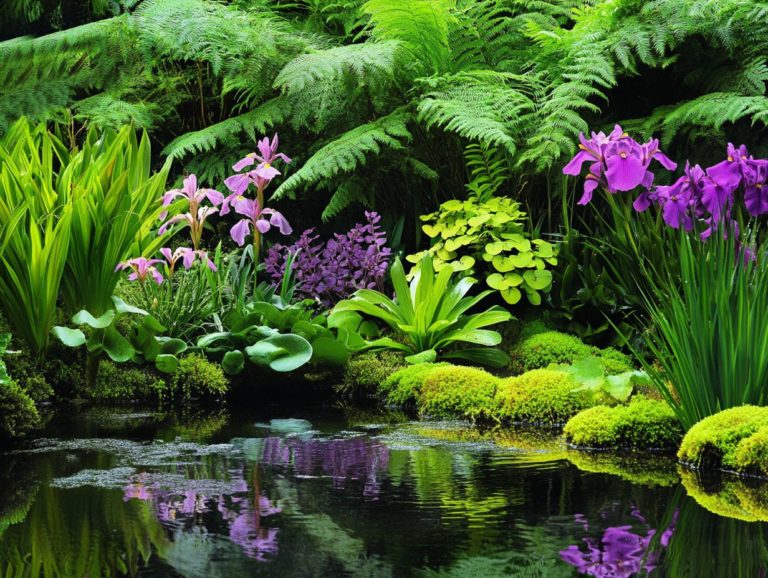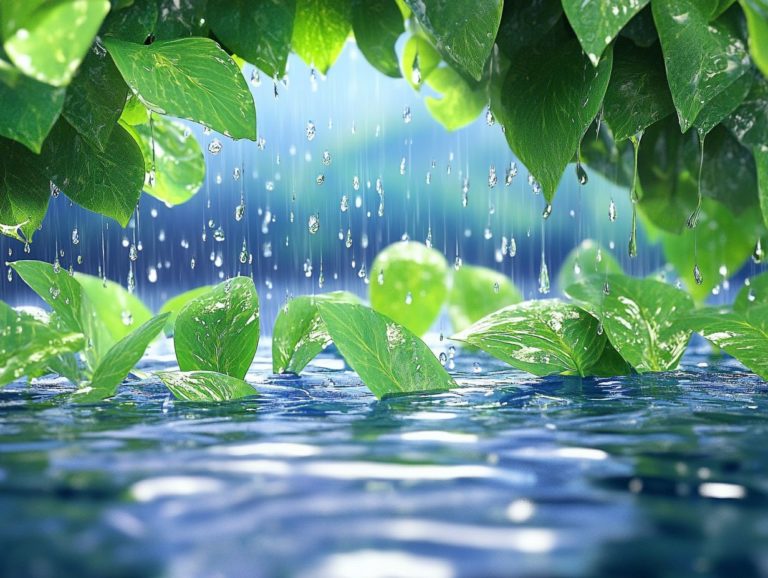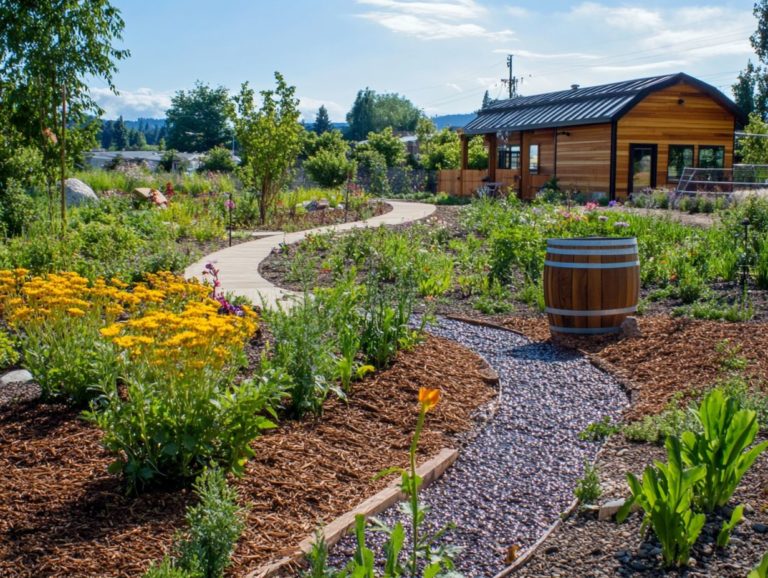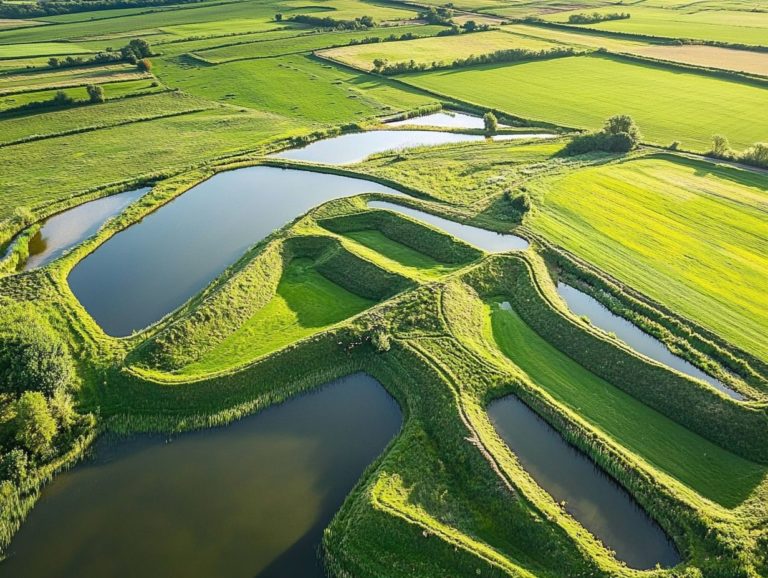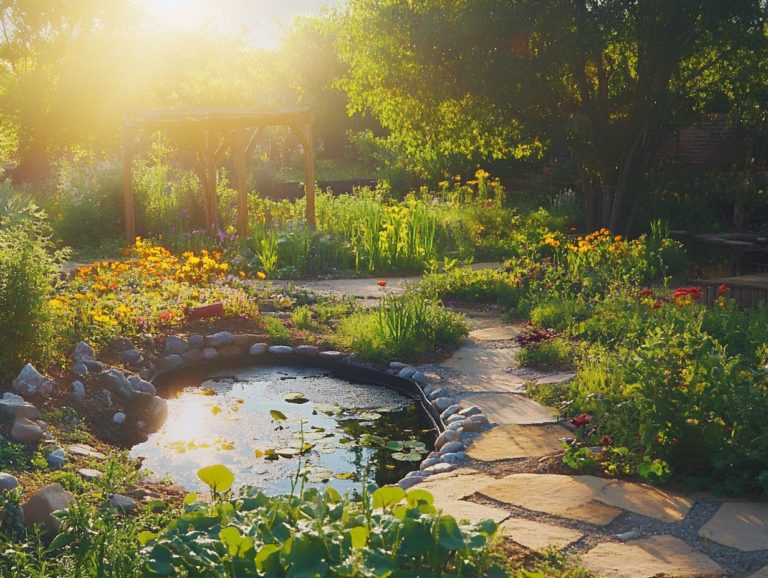How to Create a Microclimate for Water Management
Microclimates play a pivotal role in shaping your environment, especially when it comes to water management.
Understanding these localized atmospheric conditions can greatly influence both water availability and quality. This article delves into the fundamentals of microclimates, examining the various factors that contribute to their formation and their impact on water resources.
You ll discover effective strategies for designing microclimates that promote sustainability, tackle common challenges, and highlight the benefits of these unique ecosystems.
Explore with us the intricate relationship between microclimates and water management, and gain valuable insights into how you can leverage this knowledge for a more sustainable future.
Contents
- Key Takeaways:
- Understanding Microclimates and Their Impact on Water Management
- Factors that Contribute to Creating a Microclimate
- Designing a Microclimate for Water Management
- Benefits of Creating a Microclimate for Water Management
- Challenges and Solutions for Maintaining a Microclimate
- Frequently Asked Questions
- What is a microclimate and why is it important for water management?
- How can I create a microclimate for water management in my garden?
- Can a microclimate be created indoors for water management?
- How does a microclimate impact water usage?
- What are some common mistakes to avoid when creating a microclimate for water management?
- Are there any other benefits to creating a microclimate for water management?
Key Takeaways:
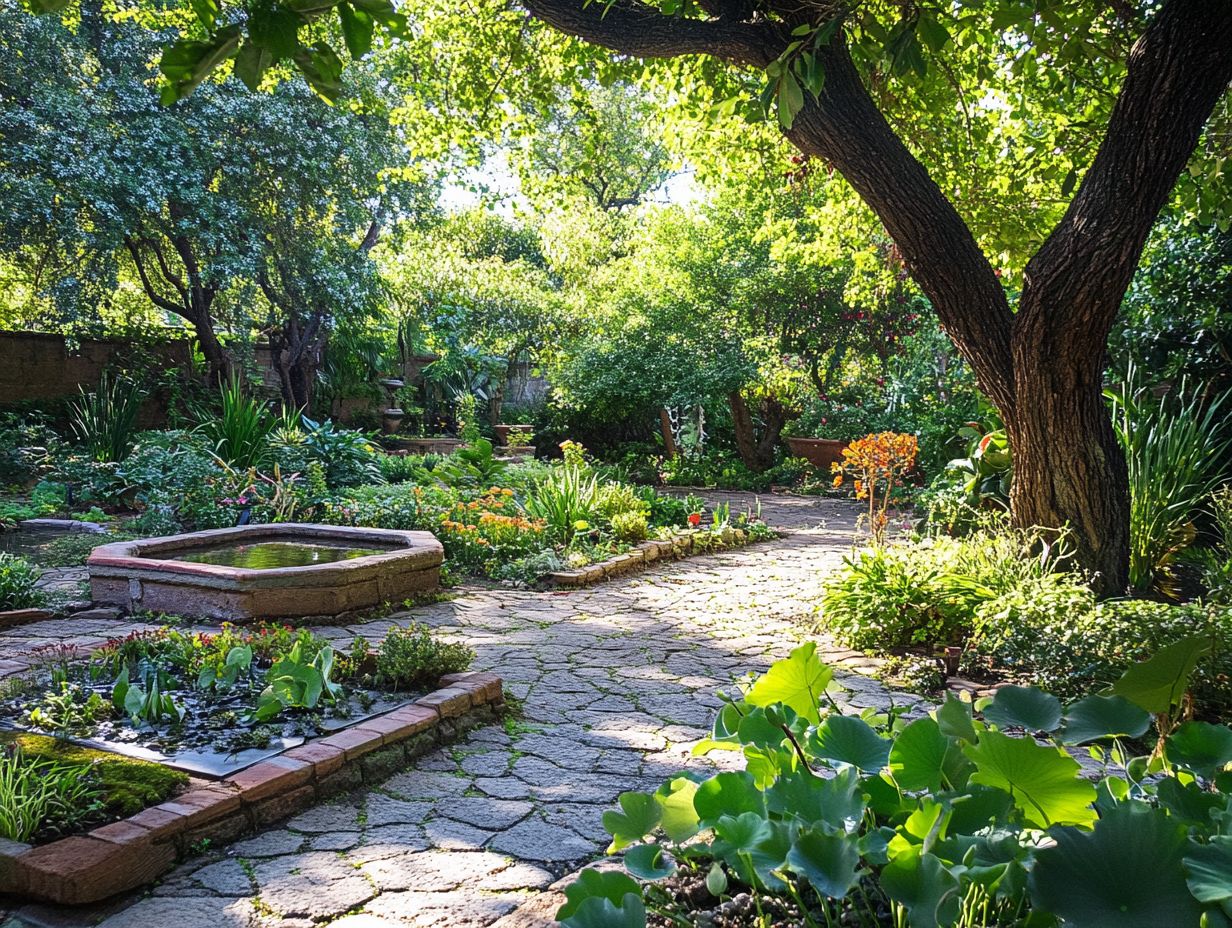
- Understand how microclimates affect water management.
- Create microclimates by assessing land features and implementing sustainable practices.
- Learn the benefits of conserving water and improving biodiversity.
Understanding Microclimates and Their Impact on Water Management
Grasping the intricacies of microclimates and their influence on water management is essential for elevating agricultural practices and maximizing crop yields. Microclimates are localized atmospheric zones where conditions diverge from the broader environment, shaped by factors like topography (the shape and features of the land), vegetation, and nearby water bodies.
In both urban and rural landscapes, these distinctive climates can profoundly impact soil moisture, humidity levels, and temperature extremes, ultimately determining the success of your water management strategies.
Defining Microclimates
A microclimate is that intriguing little area where the climate behaves differently from the surrounding region, influenced by elements like elevation, vegetation, and nearby water bodies.
These variations can lead to remarkable differences in temperature, humidity, and even wind patterns, all over surprisingly short distances. Picture a garden tucked under the shade of trees; it experiences cooler temperatures and higher humidity than a sunny patio right next door. This can have a profound impact on plant growth and biodiversity.
Local features, like urban buildings or bodies of water, amplify these effects, creating cozy pockets of warmth or coolness that stand in stark contrast to the overall climate. Understanding microclimates is vital for agriculture, urban planning, and conservation efforts, as they determine which plants and wildlife can thrive in specific areas, ultimately sculpting the natural environment around you.
How Microclimates Affect Water Availability and Quality
Microclimates play a crucial role in determining both water availability and quality, which directly impacts agriculture, gardening, and the overall health of ecosystems.
These localized weather variations stem from factors like topography, vegetation, and urban development, leading to noticeable differences in soil moisture levels. For example, areas shaded by trees often retain moisture longer, fostering healthier plant growth and reducing your irrigation needs. In contrast, regions bathed in direct sunlight may suffer from rapid evaporation, leaving water sources scarce.
To tackle these challenges, consider implementing water conservation techniques such as rainwater harvesting, mulching, and drip irrigation. Temperature extremes can intensify water retention issues and alter water quality. Warmer conditions, in particular, can elevate contamination risks, placing additional stress on ecosystem health.
Factors that Contribute to Creating a Microclimate
A multitude of factors plays a crucial role in the formation of a microclimate. These include topographical features, the type of vegetation present, and the particular land-use practices that influence local environmental conditions.
Each element intricately interacts, creating a unique atmospheric tapestry that defines the microclimate in a specific area.
Don’t miss out on learning the importance of microclimates in water management implement what you’ve learned today!
Topographical Features
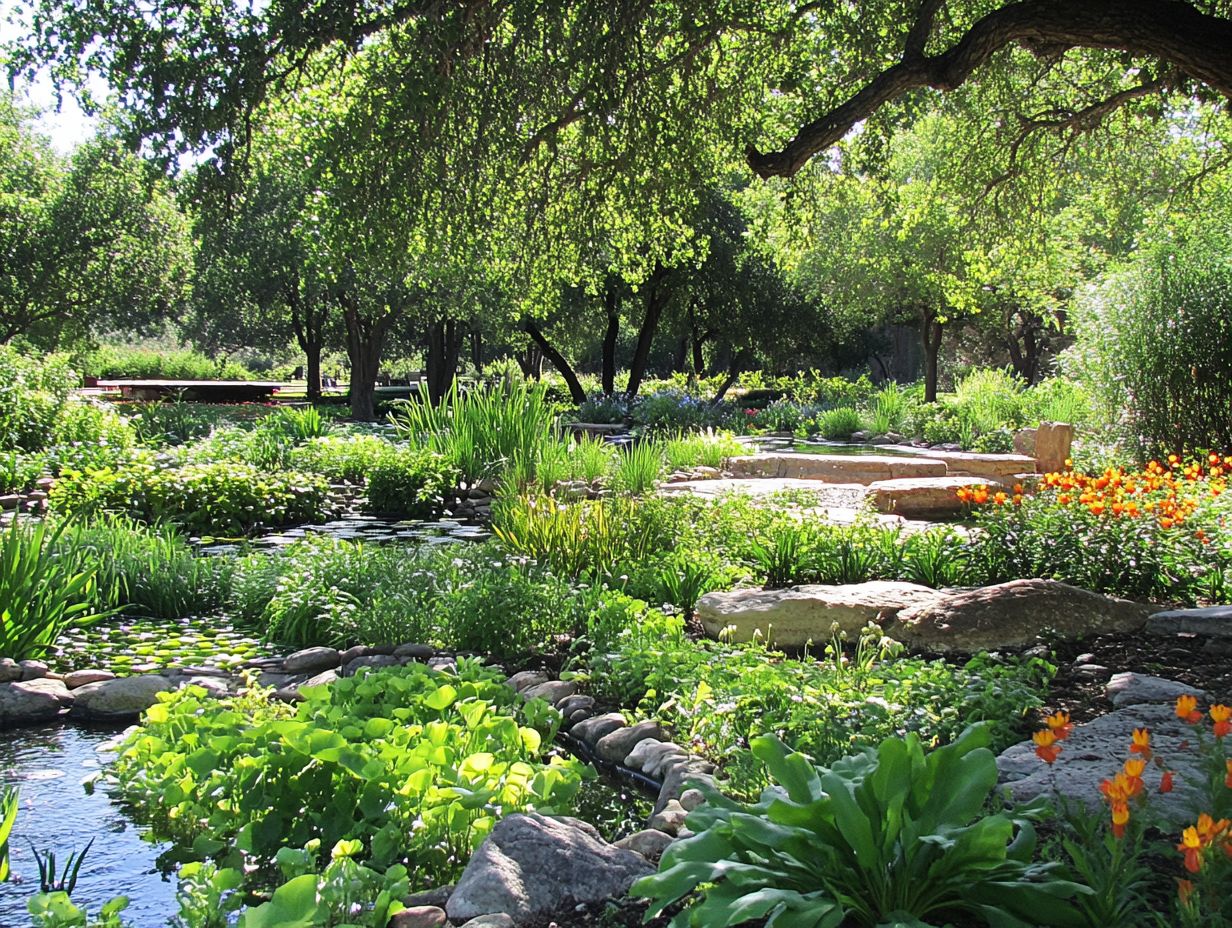
Topographical features like hills, valleys, and slopes significantly shape microclimates by influencing temperature variations and wind direction.
These natural elements determine how sunlight is absorbed and reflected. This ultimately affects local temperatures in different areas. For example, valleys can trap cooler air, resulting in lower temperatures, particularly at night. Slopes often receive more sunlight, leading to warmer microclimates.
Topographical features also change wind patterns. Hills serve as barriers that cause winds to rise and cool as they traverse, introducing varying humidity levels to nearby valleys. Understanding this relationship between landscape and climate is essential for comprehending local ecosystems and optimizing agricultural practices.
Vegetation and Land Use
The type of vegetation and land use you choose greatly influences the formation of microclimates, affecting crucial elements like soil composition and organic matter.
Different types of vegetation whether forests, grasslands, or agricultural crops each play unique roles in shaping local temperature, humidity, and wind patterns. Dense tree canopies offer shade that helps minimize temperature fluctuations. The deep root systems of certain plants enhance soil structure and aeration.
Implementing effective land management practices like crop rotation and cover cropping boosts biodiversity and improves soil health and moisture retention. Understanding how these factors interconnect helps you appreciate the delicate balance necessary for sustaining thriving ecosystems and fostering agricultural resilience.
Designing a Microclimate for Water Management
Designing a microclimate for optimal water management requires your careful attention to various elements. Consider planting strategies, sustainable practices, and thoughtfully incorporating garden structures that enhance moisture retention.
By taking these factors into account, you can create a thriving environment that effectively utilizes water resources!
Assessing Water Needs and Resources
Assessing your water needs and resources is crucial for cultivating an effective microclimate, especially as the seasons shift.
Know your plants’ moisture needs! It s essential for tailoring your watering strategy. This means considering seasonal changes, such as rainfall patterns and temperature variations, which can dramatically affect water availability.
Implementing ways to keep water in the soil like mulching and soil amendments can strengthen your microclimate. By observing these factors, you can pinpoint the best times to water, saving water and keeping your plants thriving!
Utilizing tools like soil moisture sensors gives you access to real-time data, allowing for precise water management that aligns with your unique microclimatic conditions.
Implementing Sustainable Practices
Implementing sustainable practices within your microclimate is essential for enhancing water conservation and improving soil health. Focus on using organic matter and soil amendments strategically.
By embracing techniques like permaculture and regenerative gardening, you can cultivate diverse ecosystems that retain moisture and foster beneficial microorganisms in the soil. Nurturing native plants and crops is especially important, as they tend to be more resilient and require less irrigation.
Incorporating composting and mulching into your routine can dramatically reduce waste while enriching the soil. These eco-friendly approaches contribute to a balanced microclimate and help regulate temperatures, creating habitats for local wildlife and nurturing a more sustainable environment.
Benefits of Creating a Microclimate for Water Management

Establishing a microclimate for effective water management offers a wealth of benefits, notably the improvement of soil health and the enhancement of biodiversity. For more insights, consider how to implement passive water management, which are essential for strong farming methods that can thrive in an ever-changing environment.
Conserving Water Resources
One of the primary advantages of creating a microclimate is your ability to conserve water resources effectively through enhanced moisture retention and sustainable practices.
By thoughtfully selecting native plants that flourish in specific microclimatic conditions, you can drastically cut down on irrigation needs. Techniques like mulching, which minimizes evaporation, are essential for maintaining soil moisture.
Implementing rainwater harvesting systems allows you to capture and store runoff during wet periods, making water management far more efficient during dry spells. Pairing this with high-efficiency drip irrigation systems encourages precise watering, further bolstering your conservation efforts.
Through these methods, you protect water resources and nurture a vibrant ecosystem within your microclimate.
Improving Soil Health and Biodiversity
Creating a microclimate is an exciting way to supercharge your soil health and foster biodiversity, ultimately boosting the vitality of ecological systems around you.
These localized environments cultivate unique conditions that promote the accumulation of organic matter, which is crucial for nurturing soil structure and fertility. Enhanced organic matter doesn t just support a variety of plant species; it also attracts a range of microorganisms that play a key role in the way nutrients move through the ecosystem. As these organisms thrive, they improve soil health by increasing its capacity to retain moisture and nutrients both essential for cultivating thriving plant communities.
In this intricate interplay, microclimates become sanctuaries for flora and fauna alike, enriching the overall biodiversity and stability of the ecosystem you re nurturing.
Challenges and Solutions for Maintaining a Microclimate
Maintaining a microclimate presents a range of challenges, including the ever-changing environmental factors that can influence its effectiveness. This situation requires you to implement strategic management solutions to ensure optimal conditions.
Common Obstacles
Common obstacles in maintaining a microclimate include temperature extremes and fluctuating humidity levels, which can significantly hinder your water management efforts.
These factors create a challenging environment for plants and ecosystems, often resulting in drought conditions or excessive moisture. For example, when temperatures rise, evaporation rates increase, leading to a faster depletion of soil moisture, which ultimately stresses your vegetation. On the flip side, during bouts of high humidity, the risk of fungal diseases rises, complicating your irrigation practices.
Abrupt temperature swings can disrupt the delicate balance of local water cycles, impacting both surface and groundwater sources. Therefore, understanding these hurdles is essential for anyone aiming to optimize water use and sustain thriving microhabitats.
Start creating your microclimate today and watch your garden thrive!
Effective Management Strategies
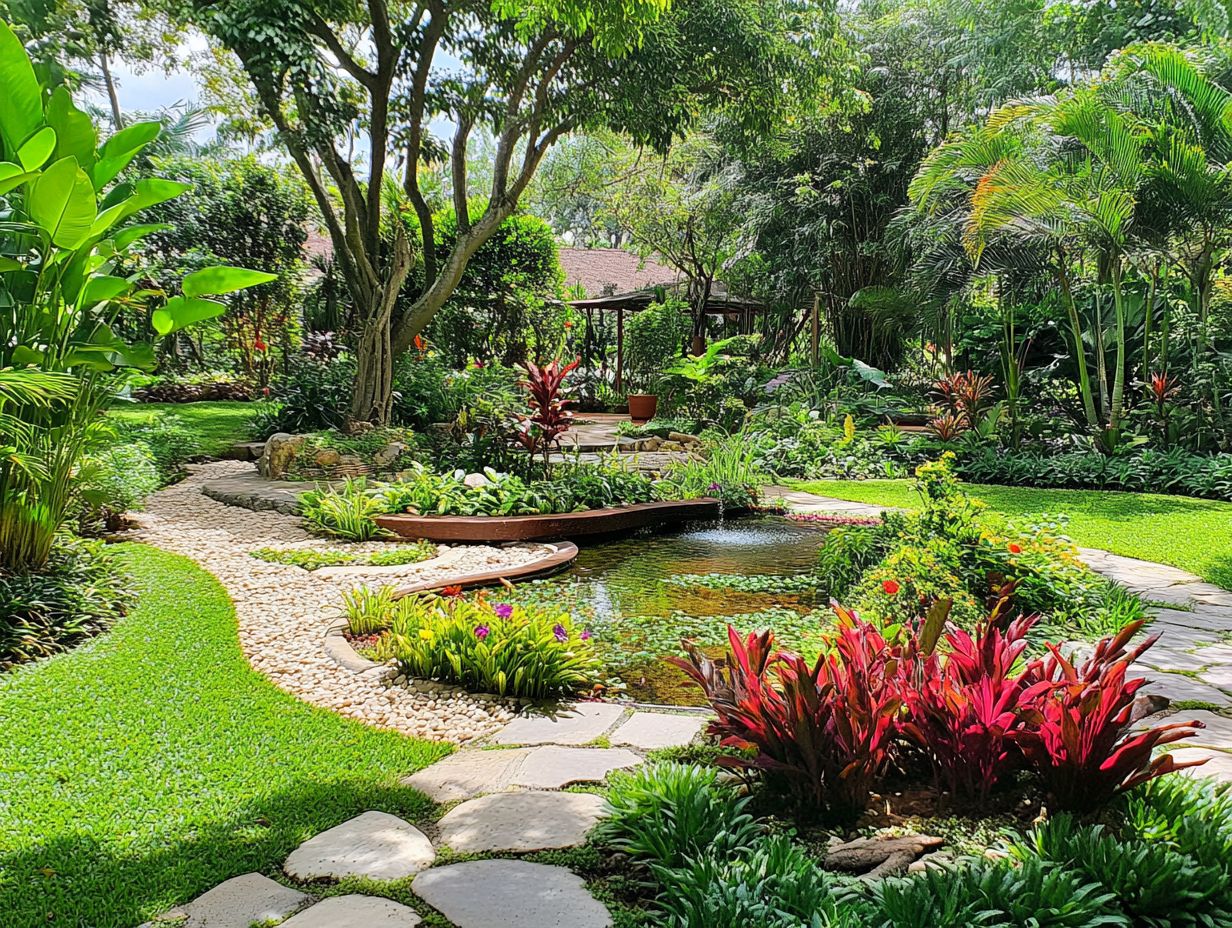
Implementing effective management strategies is essential for maintaining a microclimate. This includes strategic planting tasks and the thoughtful use of shade trees to control temperature and conserve water.
By carefully selecting and positioning a variety of vegetation, you can cultivate a more stable environment that fosters biodiversity while effectively managing moisture levels. Water conservation techniques like rain gardens and permeable surfaces enhance the vitality of microclimates. Incorporating native plant species benefits local wildlife and reduces your irrigation needs, making the entire system more sustainable.
Emphasizing a comprehensive approach ensures that every facet of environmental management from soil health to plant selection works in harmony to create optimal conditions for your microclimate.
Frequently Asked Questions
What is a microclimate and why is it important for water management?
A microclimate is a small, localized area with different environmental conditions than the surrounding area. It is important for water management because it can significantly affect water availability, evaporation rates, and plant growth.
How can I create a microclimate for water management in my garden?
You can create a microclimate in your garden by planting trees and shrubs around the perimeter to provide shade and retain moisture. Incorporating hardscape elements such as rocks or walls traps heat and creates pockets of warmth.
Can a microclimate be created indoors for water management?
Yes, you can create a microclimate indoors for water management. Use humidifiers to increase moisture levels or place plants near windows for natural sunlight and ventilation. Additionally, materials with high thermal mass like brick or tile help regulate temperature and moisture, contributing to better moisture retention.
How does a microclimate impact water usage?
A microclimate can impact water usage in various ways. For example, in a cool and shady microclimate, water evaporation rates may be lower, resulting in less frequent watering needs. Conversely, a warm and dry microclimate may require more frequent watering due to higher evaporation rates, especially during summers with high temperatures.
What are some common mistakes to avoid when creating a microclimate for water management?
One common mistake is creating a microclimate that is too extreme. For instance, planting trees too close together can lead to an overly shaded and damp area, resulting in stagnant water and potential pest infestations. It’s important to consider the plants’ water needs and avoid over or under-watering them, particularly in relation to frost pockets that may develop.
Are there any other benefits to creating a microclimate for water management?
A microclimate not only aids in water management but also promotes biodiversity and creates a more comfortable and enjoyable outdoor or indoor space. It protects plants from extreme weather conditions, such as frost or strong winds, and can help extend the growing season for certain plants, especially in urban settings where conditions can vary widely.

